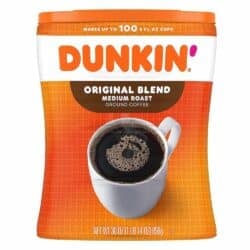Is Uncured Ham Healthy (Nutrition Pros and Cons)?
In this blog post, I’ll review the question of whether uncured ham is healthy or not? Find out what the nutrition pros and cons of this food are, plus some other options to consider.

Uncured Ham Facts
There’s a lot of confusion surrounding uncured ham because – despite its name – it is actually cured!
The process, however, is quite different from traditional curing, producing a cut of meat generally considered healthier and with a flavor that many people prefer.
Commercial curing methods involve preserving and flavoring ham with chemicals including nitrates, potassium chloride, and sodium phosphate. These impart a distinctive smoky, salty taste and give the meat a vibrant pink color.
Uncured ham – often described as “fresh ham” – is preserved with natural ingredients like sea salt and celery extract rather than with synthetic curing and flavoring agents. As a result, it has a much milder taste that is not only popular but also makes it more suitable for use in a wider range of dishes.
In addition, it has a more natural color, rather than the bright pink typically associated with cured ham. The same goes for other types of uncured meats like uncured bacon.
Uncured ham is sometimes viewed as less safe than cured ham, but that misconception comes from the fact that many people believe it isn’t cured at all. Because it has undergone a natural curing process and has been thoroughly cooked (unless labeled otherwise), it is still perfectly safe to eat and potentially better for you than ham cured with synthetic ingredients (although the science is still out on that).
Uncured ham is a popular choice for holiday celebrations, including Thanksgiving, Christmas, and Easter. It makes a great alternative to cured ham for those who prefer a milder flavor and wish to avoid synthetic additives. It has many other uses, too, ideal for everything from everyday meals and sandwiches to appetizers and charcuterie boards.
You can find uncured ham in the deli section of your grocery store. Alternatively, you might like to purchase it from natural and organic markets or butcher shops, where it is often easier to find out more about the sourcing and preparation of the meat.
Visiting a farmer’s market is a great way to find uncured ham, too – with the added bonus of supporting local producers – or you could buy it from an online retailer and have it delivered right to your door.
Uncured Ham Ingredients
Uncured ham is essentially pork preserved with natural curing agents and with added natural flavors. Let’s look at each ingredient in a little more detail to see how it might affect your health.
Pork
Many producers of uncured ham pride themselves on the quality of the pork they use.
If you want to consume meat raised as naturally as possible, look for ham produced from animals housed in an environment that promotes natural behavior. Ideally, the pigs should be free from antibiotics and growth hormones, and raised without the use of gestation crates.
Sea Salt
Sea salt is used to preserve the pork. It works by reducing the moisture content, thereby decreasing the risk of bad bacteria spoiling the meat.
It also adds natural flavor and effectively breaks down and tenderizes the meat’s tough protein fibers.
Vinegar
This is a common natural preservative that prevents the development of harmful bacteria. It also weakens the protein and collagen in pork, improving the meat’s texture.
Cultured Celery Extract
This is a concentrate that comes in powder or liquid form and is made from celery.
Celery powder or celery juice is a common meat preservative used instead of sodium nitrite or sodium nitrate because it contains natural nitrites. These help extend the ham’s shelf life and provide some flavor.
Cane Sugar
Cane sugar has a few different functions in uncured ham and other uncured meat products.
It acts as a preservative, drawing out moisture to create an environment that deters the growth of bacteria. It also adds flavor, delicately balancing the saltier tastes, plus it helps enhance the ham’s color.
Spice Extracts
You may also see these labeled as “fruit and spice extracts” or just “natural flavors”.
These are plant extracts that help preserve the color and flavor of the ham. They also help protect it from the development of pathogens that may cause spoilage.
Nutrition Pros
There are several benefits associated with enjoying uncured – rather than traditionally cured – ham.
The first is that uncured ham tends to have a lower sodium content, especially if it has undergone very minimal processing. Not only is this helpful if you need to monitor your sodium intake, but it also gives the meat a less aggressively salty flavor.
Free from artificial preservatives, uncured ham is also a great source of high-quality protein. This nutrient is needed for a range of functions in the body, including muscle maintenance and repair. It’s a good source of certain vitamins and minerals, too, including B vitamins, zinc, phosphorus, and iron, all of which support multiple bodily processes.
Finally, it’s relatively low in calories, making it a good source of protein if you are trying to lose weight.
Nutrition Cons
Despite the nutritional benefits it offers, there are some drawbacks to eating uncured ham including country ham.
The first is the sodium content. Yes, uncured ham has lower sodium levels than traditionally cured ham, but it is still pretty high in salt. Too much salt is linked with various health problems, including kidney disease and high blood pressure.
Another issue is that uncured ham contains naturally occurring nitrates and nitrites from ingredients like celery extract. These are almost inert when you consume them by eating the vegetable itself, but when they are added to meat and then cooked, they can create cancer-casing compounds called nitrosamines.
There is no scientific evidence showing that the natural nitrates in uncured ham are any safer than the synthetic ones used in traditional curing methods. So, for now, the health benefits of using natural preservatives for uncured meat products are unproven.
Healthier Options to Consider
Based on all of the information above discussing the potential pros and cons of eating uncured ham, here are some better protein options to consider that have less sodium and fewer preservatives.
- Turkey Breast: Lean and high in protein, turkey breast is a great alternative to ham. It’s lower in fat and can be bought fresh and cooked at home to control the amount of salt and additives.
- Chicken Breast: Similar to turkey, chicken breast is low in fat and high in protein. Opt for skinless, boneless chicken breasts for a quick and healthy meat option.
- Tofu: For a vegetarian alternative, tofu is an excellent choice. It’s versatile, high in protein, and can absorb flavors well, making it a good option for those looking to reduce meat consumption. Be sure to look for organic or non-GMO tofu.
- Tempeh: Another plant-based option, tempeh is fermented soybeans formed into a patty. It’s high in protein, fiber, and vitamins, offering a nutritious substitute for ham in many dishes.
- Salmon: Rich in omega-3 fatty acids, salmon is a heart-healthy option that can replace ham in meals. It’s beneficial for cardiovascular health and offers a different flavor profile for those looking to diversify their diet.
- Eggs: Boiled, poached, or scrambled eggs can be a good protein source for breakfast or lunch, offering versatility and nutrition without the processed meat.
- Legumes and Beans: Chickpeas, lentils, black beans, and other legumes can be great alternatives to meat, providing protein, fiber, and various nutrients while being low in fat and calories.
- Lean Cuts of Beef or Pork: If you’re not looking to avoid meat entirely, opting for leaner cuts of beef or pork (such as tenderloin or sirloin) and preparing them with minimal added fat or salt can be a healthier choice.
FAQs
Uncured ham offers several benefits. It’s lower in sodium than traditionally cured ham and is a relatively low-calorie source of protein.
It’s also a good source of a variety of nutrients, including B vitamins and iron.
However, the sodium content of uncured ham is still high enough to use up quite a bit of your recommended daily intake. It also contains nitrates and nitrites which – although from natural sources rather than synthetic – may lead to the formation of carcinogens.
For those reasons, it’s best to enjoy uncured ham only in moderation, particularly if you have certain health conditions.
No, uncured ham is not the same as nitrate-free ham, yet this can be confusing to understand.
According to USDA labeling laws, meats processed without synthetic nitrates and nitrites should be labeled as uncured and/or free from these chemicals.
Yet uncured ham is not nitrate-free – it simply contains natural nitrates rather than synthetic ones. In some cases, the level of nitrites in uncured ham can be just as high as in traditionally cured ham, but because they are natural and not synthetic, the product may still be labeled “nitrate-free”.
So misleading are these labels that the CSPI has petitioned the USDA to change its labeling requirements.
Is It Healthy? More Articles to Read
Conclusions
Thanks to its lower sodium content and lack of artificial preservatives, uncured ham may generally be a better choice than traditionally cured ham. It’s also a good source of protein and some essential nutrients.
Nevertheless, there are still a few health concerns to consider. It contains naturally occurring nitrates and nitrites that can form harmful compounds when cooked and still contains a considerable amount of salt.
For these reasons, consider consuming uncured ham only in moderation, especially if you suffer from certain health conditions.
Don’t forget to join my newsletter list to get exclusive clean eating recipes and tips. The newsletter is 100% free with no spam; unsubscribe anytime.
About the Author: Carrie Forrest has a master’s degree in public health with a specialty in nutrition and is a certified holistic nutritionist. She is a top wellness and food blogger with over 5 million annual visitors to her site. Carrie has an incredible story of recovery from chronic illness and is passionate about helping other women transform their health. Send her a message through her contact form.
Note: this post is for informational purposes only and is not intended as medical advice. Please consult your healthcare provider for recommendations related to your individual situation.




















